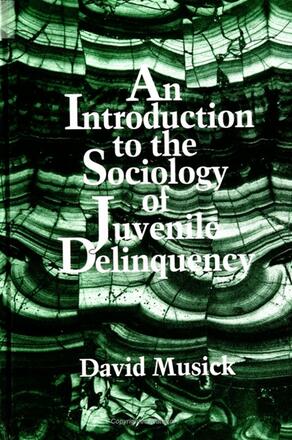
An Introduction to the Sociology of Juvenile Delinquency
Alternative formats available from:
This basic overview of juvenile delinquency in the United States emphasizes the connection between delinquency and other problems faced by "at risk" children in America.
Description
This is a challenging book that makes no attempts to oversimplify and trivialize the highly complex subject of juvenile delinquency. Its approach is both conceptual and historical. It includes information not only about delinquents but also about other types of problem children. By doing so, the broader social environment of delinquency is better understood, and delinquency can be put into a more general conceptual context. Fundamental concepts, interpretive perspectives and methodologies that are used to describe and analyze juvenile delinquency and related children's problems are presented.
David Musick is Professor of Sociology at the University of Northern Colorado. He is coauthor of Oppression: A Socio-History of Black/White Relations in America, and American Dilemmas.
Reviews
"Musick has written a refreshing, genuinely new text that provides exceptionally clear guidance through the historical, legal, and analytical complexities of defining and explaining delinquency. The book is extremely interesting to read, largely because of the fascinating account of the history of European and American perceptions and treatment of 'problem children. '
"This is the most useful general text on delinquency I have seen because of the clarity with which issues of explanation, method, and policy are sorted out. The use of graph models, charts, and tables to highlight and summarize is superb. Anyone thinking of doing a study, teaching a course, or formulating a policy regarding delinquency should begin with a careful reading of Musick's book. " — Austin T. Turk, University of California, Riverside